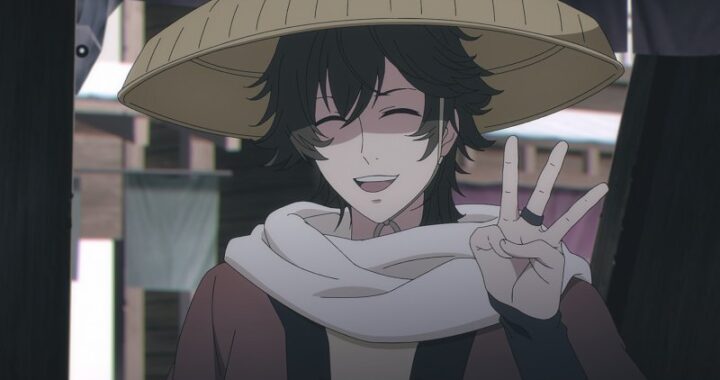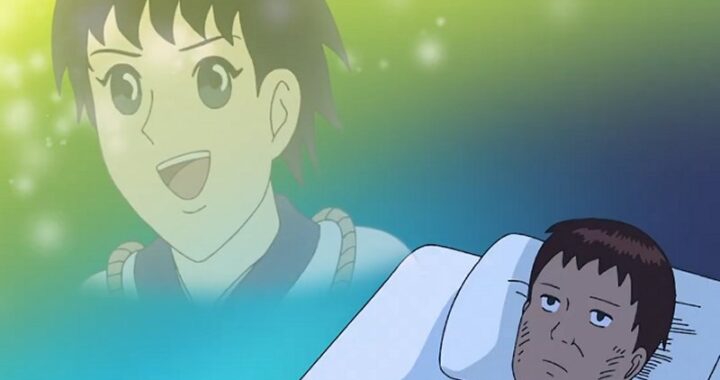
 Let’s start this off with a bit of personal history. When Kemonozume came out I had just finished watching another show by the name of Speed Grapher (those were the dark times of no streaming). Anyway, this show, even though it started out pretty cool (and I still contend it has one of the best opening segments ever to the tune of Duran Duran’s “Girls on Film”), quickly devolved into “monster of the week” episodes but its biggest problem was the quality issues. In some scenes, it looked like they hadn’t even finished drawing the characters. Sadly the disappointment over Speed Grapher informed my decision to not watch Kemonozume right away.
Let’s start this off with a bit of personal history. When Kemonozume came out I had just finished watching another show by the name of Speed Grapher (those were the dark times of no streaming). Anyway, this show, even though it started out pretty cool (and I still contend it has one of the best opening segments ever to the tune of Duran Duran’s “Girls on Film”), quickly devolved into “monster of the week” episodes but its biggest problem was the quality issues. In some scenes, it looked like they hadn’t even finished drawing the characters. Sadly the disappointment over Speed Grapher informed my decision to not watch Kemonozume right away.
You see, while a couple of critics clearly loved the show, the vast majority of fans hated it. Most comments were about how ugly it looked, the animators were lazy, no one knew how to draw, etc… back then I wasn’t yet familiar with the work of Masaaki Yuasa who would go on to become one of my favorite anime directors. And that will teach me to listen to popular opinion.
Joke’s definitely on me because once I took the plunge I realized I was in front of one of the most original pieces of animation I had ever seen and it quickly shot up to take a spot in my top five anime of all time. Masaaki Yuasa is an artist with a style so personal and strongly defined, it’s almost impossible to look at something he’s worked on and not recognize his touch everywhere. But it’s not only the way this looks. Kemonozume comes in a very special package but the contents are pretty spectacular too. Both compliment each other to create a nearly perfect work of art, enjoyable on many levels. Much like its main characters as they made their getaway, Kemonozume took my heart by storm and kept running with it.
So, what is Kemonozume about, you ask? Well, of course, you’d ask. I’ve been going on and on about it and still haven’t gotten to the story. In its most simple form, Kemonozume is a love story between members of opposing factions. It takes place in a world where there are such monsters as the flesh- eaters. If you can’t guess by their name, they eat flesh, human flesh. This has been kept secret from most people by a secret martial arts order (the Kifuuken) working in the shadows to protect humanity. Toshihiko, our main male protagonist, has almost been chosen to be the next heir much to the chagrin of his younger half-brother Kazuma. Even though the two brothers clearly care about each other, they are also in constant competition and as is often the case, Kazuma cares more about the title than Toshihiko does, but their father and leader of the order does not approve of Kazuma’s methods or ideas.
One night while Toshihiko is out running, conflicted between the love he has for his brother, his obedience to his father and his own doubts about taking such a responsibility upon himself, he meets a beautiful, funny and vibrant woman by the name of Yuuka. It doesn’t take much for Yuuka to steal his heart and they start seening each other frequently. Problems arise when the leader of the Kifuuken dies and Yuuka is revealed to be a flesh-eater in front of the family. In a heartbeat, Toshihiko makes his decision and grabbing Yuuka by the hand they run away together. From this moment on they will have both the Kifuuken and the flesh-eaters hot on their trail. Will they be able to stay together or even survive? And if it all gets to be too much, will they betray each other?
Don’t make the mistake of thinking this is a Romeo and Juliet run-of-the-mill story. The trick is not in the basics of the story but on how it’s told and the magic of the characters. Kemonozume is a love story, sure, but it’s also a horror show and a darkly funny tragedy. Yes, you read that right. Not only does it manage to be all of these things at the same time but it does so without diluting any of these aspects. In less capable hands, Kemonozume could have been a complete mess but Yuasa turns it into a compelling story with believable and lovable characters you can’t help but root for. You almost don’t want it to end but when it does it leaves you with a feeling of complete satisfaction.
At the heart of the show are the characters. None of them are simple stock characters. Toshihiko can be very courageous and decisive but he has doubts like everyone else, he loves both Yuuka and his family and would like nothing more than to make them understand how he feels. It’s very sweet how determined he is to making Yuuka happy and she’s the only one who gets him to slip out of his stoic mask and just be silly with her. Speaking of Yuuka, she could have very easily been a damsel in distress or an idealized female stereotype. She is no such thing. Yuuka surprised me by being a very well written character that goes way beyond being the love interest. She is funny, full of life, sweet and has no need of being defined by others. A mature woman with the heart of a child, it’s very easy to see why Toshihiko falls in love with her. Even the antagonists are not what they seem at first glance. Actually, no one is, so be careful who you trust.
Each episode begins with a flesh-eater vignette (reminded me of how Six Feet Under always started with a death). Some are horrifying, some are funny, some are sad and there’s one particularly ghastly metaphor for puberty you will probably never forget. These have nothing to do with the plot itself but it goes a long way into fleshing out their world (pun semi-intended). Humor also plays a big part in Kemonozume, you wouldn’t think it’d be a good fit but it would not be the same story without it. It isn’t precisely slapstick or the dry humor we’ve come to expect from anime. It’s more in accordance with an indie film’s sense of humor. It originates both from the characters’ personalities and from the kind of stuff you feel you shouldn’t be laughing at but you still do, because how can you not? It’s oftentimes frantic and surreal, and it provides a sense of levity to a story that could otherwise be too heavy to handle. Kemonozume takes its characters’ predicament seriously but never allows it to get pompous or too melodramatic. And yet I can guarantee you will get attached to each and every one of them; this is not a story that will leave you cold.
Finally, let’s talk about the art, that very special Masaaki Yuasa style that always seem to me as though we’re watching people and scenery move trough waves of water. It is as much a part of Kemonozume as the characters are. Back then people thought it was ugly and it’s definitely not your typical anime style (whatever that means), but I found it to be a thing of beauty. Kemonozume would not have been the same anime if it had been done in a more standard style. The way shapes distort and reform again, lines moving and wavering, not a straight one in sight, is itself a reflection of the monstrous world they inhabit. It’s ever changing, terrifying, beautiful and absolutely savage. The colors bleed onto one another depending on the mood of the scene. It provides a realistic yet dream-like approach and it makes everything so much more believable. Kemonozume feels like a work made out of the sum of its parts and maintaining a delicate balance. You take away one piece of the puzzle and immediately it turns into something else, much like the balance in their world.
It’s been ten years since Kemonozume was first released and it’s still one of the most beautiful and striking productions I’ve ever seen. It’s also one of the most original, even if the story may seem a bit cliché at first glance. Don’t let it fool you. Sadly, it remains unlicensed to this day which is a bit of a crime. I bet it would look gorgeous on Blu-ray. Even so, if you get the chance to see it, I urge you to do so. There is nothing quite like it and I promise it will not waste your time. And I haven’t even mentioned the monkey.











